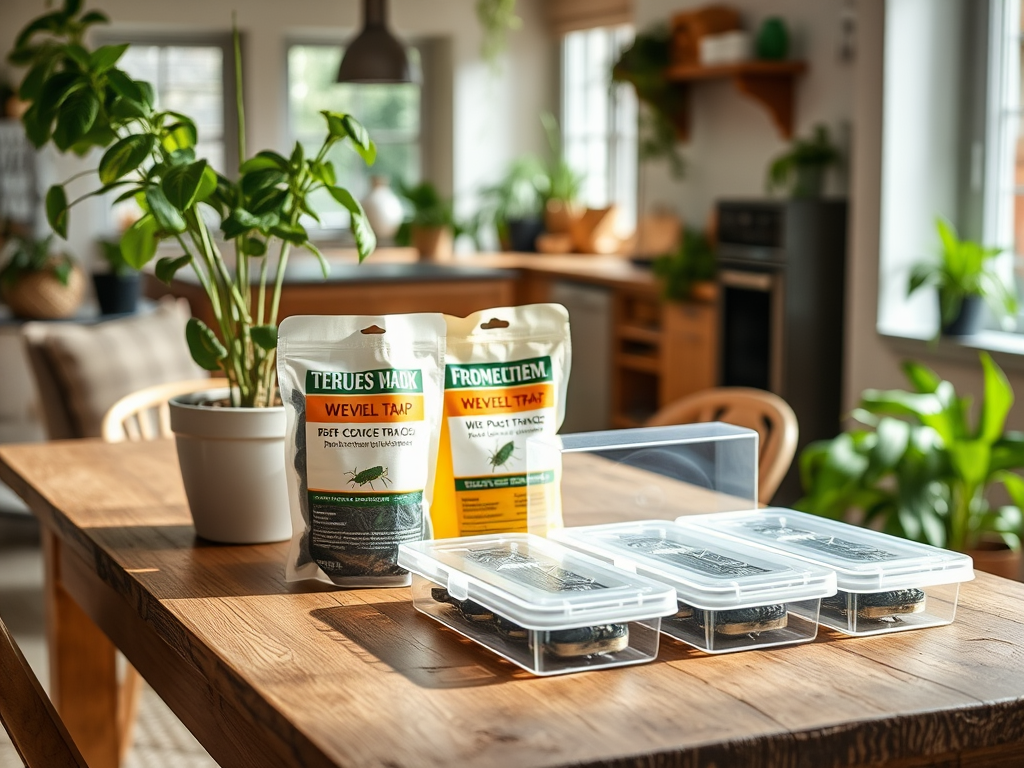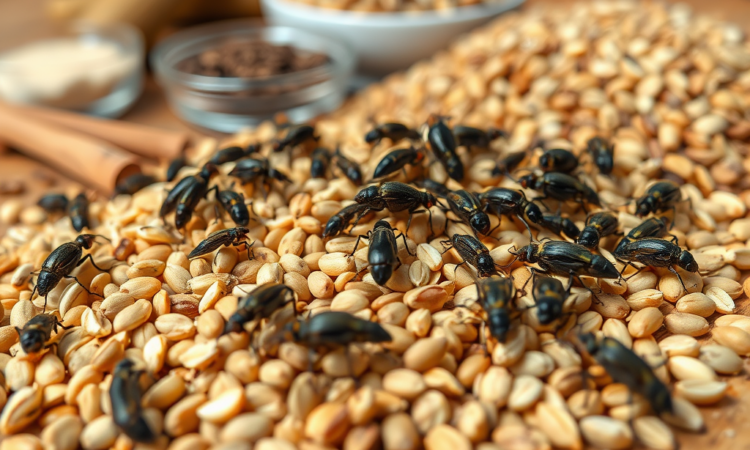Weevils, small but intriguing beetles, are often overlooked while they quietly invade pantries and agricultural fields. Understanding these pests is more than just a matter of curiosity; it is essential for protecting stored food and crops. The significance of weevils extends beyond their role as annoyances; they can cause severe damage to both grain crops and household goods. This article delves into the biology, lifecycle, and prevention of weevil infestations, providing a comprehensive understanding that empowers individuals to take control. With knowledge comes preparation, and this guide is designed to equip you with the insights needed to identify, manage, and prevent weevil problems effectively. So, let’s begin our exploration into the curious world of weevils.
What Are Weevils?

Weevils belong to the family Curculionidae, which is one of the largest families in the beetle order. These creatures come in various shapes and sizes, but they are typically characterized by their elongated snouts and unique body structures. The appearance of weevils can vary significantly based on species, with most ranging from a few millimeters to over a centimeter in length. Their unique features often make them easily recognizable once you know what to look for. In addition to their striking snouts, many weevils exhibit a range of colors and patterns that can influence their camouflage against natural backgrounds. Common types of weevils include the Rice Weevil, the Granary Weevil, and the Pea Weevil, each with its specific preferences and habitats.
Lifecycle of Weevils

The lifecycle of weevils is a fascinating journey that includes several distinct stages: eggs, larvae, pupae, and adults. Female weevils typically lay eggs in or near a food source, which provides nourishment for the developing larvae. Once hatched, larvae burrow into grains or plant material, feeding and growing until they mature into adult weevils. The timeframe for this lifecycle can vary depending on species and environmental conditions but often lasts a few weeks to several months. Understanding this lifecycle is crucial for effective pest control, as targeting specific stages can disrupt reproductive cycles and significantly reduce populations.
| Lifecycle Stage | Duration | Description |
|---|---|---|
| Eggs | 2-10 days | Laid near food sources, hatch into larvae. |
| Larvae | 2-4 weeks | Feed on plant material until adulthood. |
| Pupae | 1-2 weeks | Transforming phase before becoming an adult. |
| Adults | Indefinite | Live for several months, mate, and reproduce. |
Where Do Weevils Come From?
Weevils thrive in diverse environments, often choosing habitats that offer ample food sources. They are commonly found in fields, gardens, and wooded areas, where they play a role in decomposition and nutrient recycling. In agricultural settings, crops such as grains, legumes, and nuts serve as primary hosts, leading to infestations that can threaten harvests. Additionally, weevils can easily find their way into residential spaces through contaminated food products. Once inside, they can reproduce quickly, exacerbating the infestation if not managed effectively.
Natural Habitats
In the wild, weevils frequent areas where their host plants are abundant. They establish a delicate balance within ecosystems, helping break down organic matter and assisting in plant reproduction. Many weevil species have specific relationships with certain plants, relying on them for food and habitat. This specialization illustrates the importance of understanding ecological interactions when dealing with weevil species in agricultural contexts.
Infestation in Homes
Household weevil infestations typically arise from purchasing contaminated food products. Common items that attract weevils include:
- Whole grains
- Rice
- Nuts
- Pet food
- Flour and baking supplies
To avoid infestations, it’s essential to practice good food storage habits and regularly check for signs of weevils. Effective prevention strategies include keeping food in airtight containers and conducting routine pantry audits to ensure that no infested products are lurking unseen.
How to Identify Weevils
Identifying weevils early on can save time, money, and frustration. Key characteristics to look for include their distinctive snouts, which can be a few times longer than the rest of their body. They tend to have a hard, oval-shaped body that is often dark brown or black, but some species display vibrant colors and patterns. Signs of an infestation often include small holes in packaged food, as well as weevils themselves crawling on surfaces or among food items. Regular inspections are vital to catch these pests before they multiply and establish larger infestations.
To distinguish weevils from other household pests, consider the following tips:
- Check for size and shape: Weevils have distinctive elongated snouts.
- Look for feeding damage: Inspect packaging for holes or tears.
- Monitor food items: Examine any grain products for live insects or larvae.
Accurate identification is crucial for implementing successful pest control measures, as some treatments may cater to specific insect types.
Managing and Preventing Weevil Infestations
Effective management starts with vigilance, as early intervention can prevent larger headaches in the future. A proactive approach towards inspections and food storage practices can significantly reduce weevil populations. Employing various strategies may involve both preventive measures and pest control techniques. Regularly monitoring food items and ensuring cleanliness in storage areas can thwart these pests before they become a nuisance.
For those looking to tackle weevil problems naturally, consider implementing the following remedies:
- Use essential oils like peppermint or eucalyptus as repellents.
- Create traps using vinegar or soapy water to catch adult weevils.
- Seal up any cracks and gaps in pantry shelves to reduce entry points.
Homemade solutions can often mitigate weevil presences, providing a cost-effective way to manage infestations without relying solely on commercial pesticides.
Conclusion
Understanding weevils and their biology empowers individuals to take control of potential infestations effectively. With knowledge of their lifecycle, habitats, and behavior, you can implement preventive measures, monitor for signs of infestations, and act decisively if they occur. Remaining vigilant and informed will not only protect your food supplies but also contribute to a healthier and pest-free living environment. As we’ve explored, weevils may be small, but the impact of understanding them is significant. By applying the strategies outlined in this article, you will be well on your way to ensuring a weevil-free home.
Frequently Asked Questions
- What do weevils eat?
- Weevils primarily feed on grains, seeds, and various plant materials.
- Can weevils be harmful to humans?
- Weevils are not directly harmful to humans but can contaminate food supplies.
- How do I get rid of weevils in my pantry?
- Remove affected items, clean the pantry thoroughly, and store food in airtight containers.
- Are weevils harmful to plants?
- Some weevil species can damage plants by feeding on their roots or leaves.
- How can I prevent weevils from coming back?
- Regularly inspect food items, maintain cleanliness, and use proper storage solutions to prevent re-infestation.
